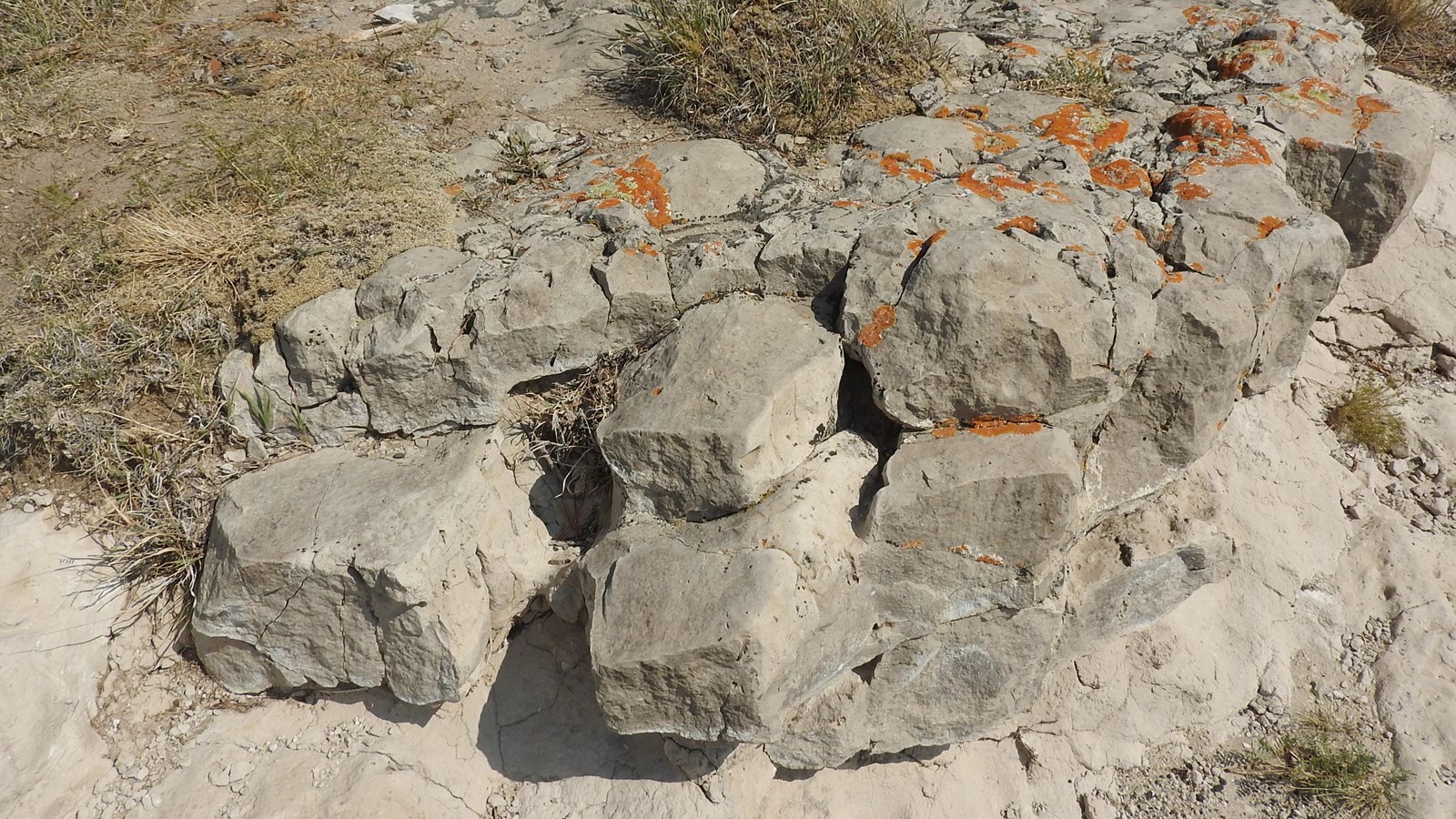Last updated: February 9, 2021
Place
Stop 2: Pipy Concretions

NPS/Eric Grunwald
Quick Facts
Location:
41.837807, -103.698405
Amenities
1 listed
Scenic View/Photo Spot
At the start of the Saddle Rock Trail, take a look off to the north side of the trail and you will notice grayish colored rock with a few splotches of orange lichens.
These rocks are part of the Monroe Creek–Harrison Formations that form the caprock of Scotts Bluff and overlie the Gering Formation. This caprock helps protect the underlying softer rocks, sandstones and siltstones, from erosion. The morphology of these calcite-cemented "pipy" concretions typical of the Arikaree Group is well displayed here. The concretions maintain a consistent northeast-southwest orientation over much of the southern Nebraska panhandle and formed when calcium carbonate (limestone), precipitated from groundwater, cemented together sand grains (Pabian and Swinehart 1979; Swinehart and Loope 1987). Clasts of these concretions occur in a number of intraformational gully fills in western Nebraska and indicate that the concretions formed shortly after deposition of the host sand. Note the small diameter verticle tubules preserved in many of the concretions.
To get to the next stop on the tour, hike down the trail to just beyond the second switchback. Besides the sandstone, siltstone and limestone, there is another material that makes up Scotts Bluff. As you head past the second switchback, look to your left and see if you notice any material embedded in the rock that looks different than what you've seen so far.
These rocks are part of the Monroe Creek–Harrison Formations that form the caprock of Scotts Bluff and overlie the Gering Formation. This caprock helps protect the underlying softer rocks, sandstones and siltstones, from erosion. The morphology of these calcite-cemented "pipy" concretions typical of the Arikaree Group is well displayed here. The concretions maintain a consistent northeast-southwest orientation over much of the southern Nebraska panhandle and formed when calcium carbonate (limestone), precipitated from groundwater, cemented together sand grains (Pabian and Swinehart 1979; Swinehart and Loope 1987). Clasts of these concretions occur in a number of intraformational gully fills in western Nebraska and indicate that the concretions formed shortly after deposition of the host sand. Note the small diameter verticle tubules preserved in many of the concretions.
To get to the next stop on the tour, hike down the trail to just beyond the second switchback. Besides the sandstone, siltstone and limestone, there is another material that makes up Scotts Bluff. As you head past the second switchback, look to your left and see if you notice any material embedded in the rock that looks different than what you've seen so far.
